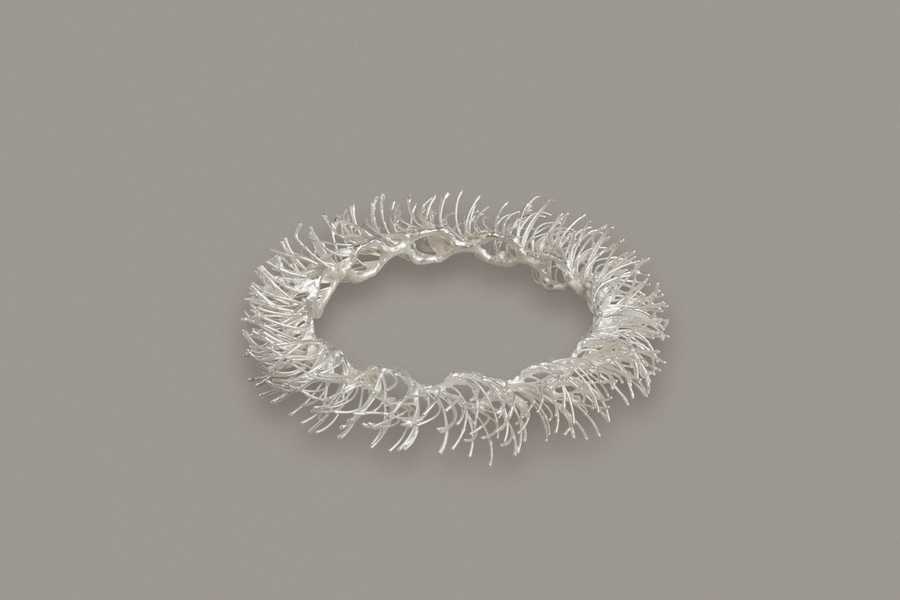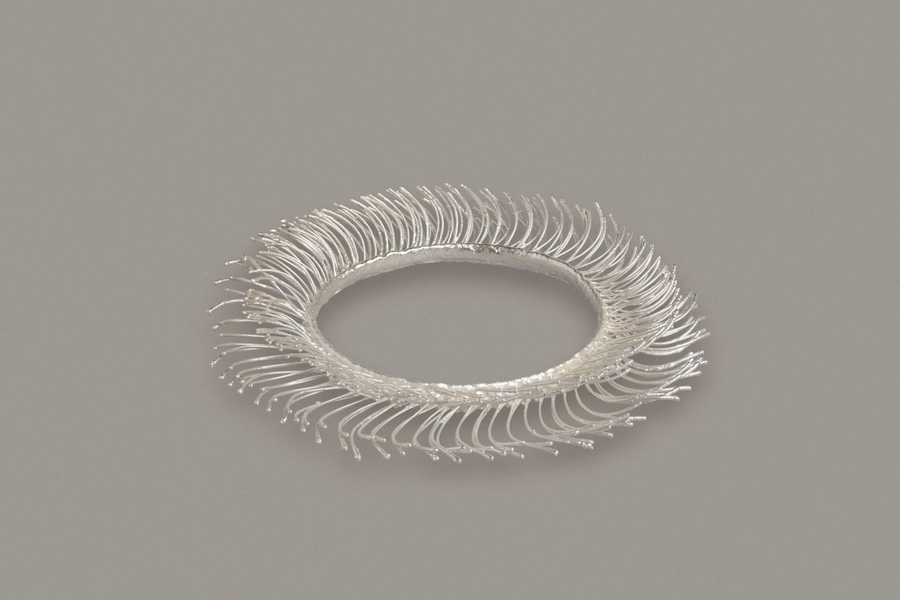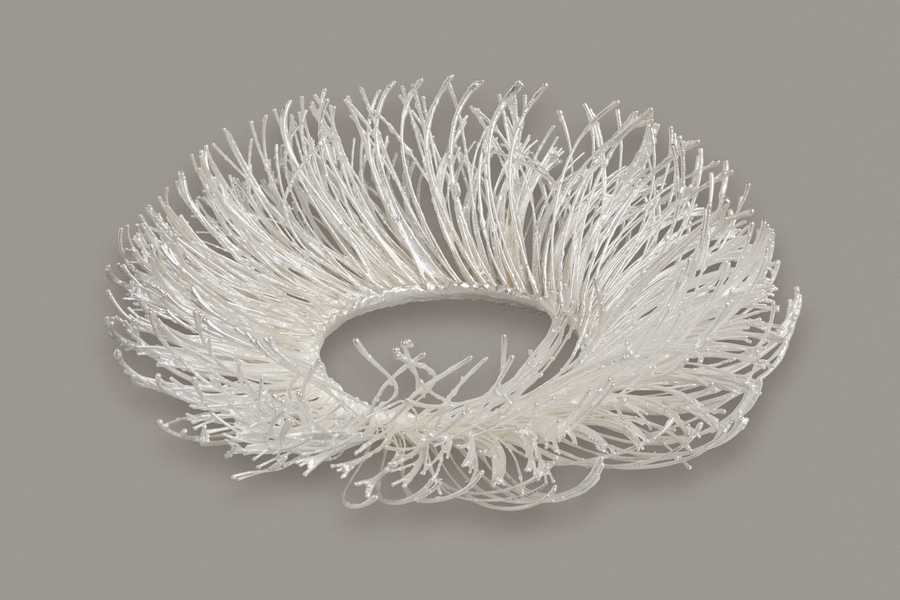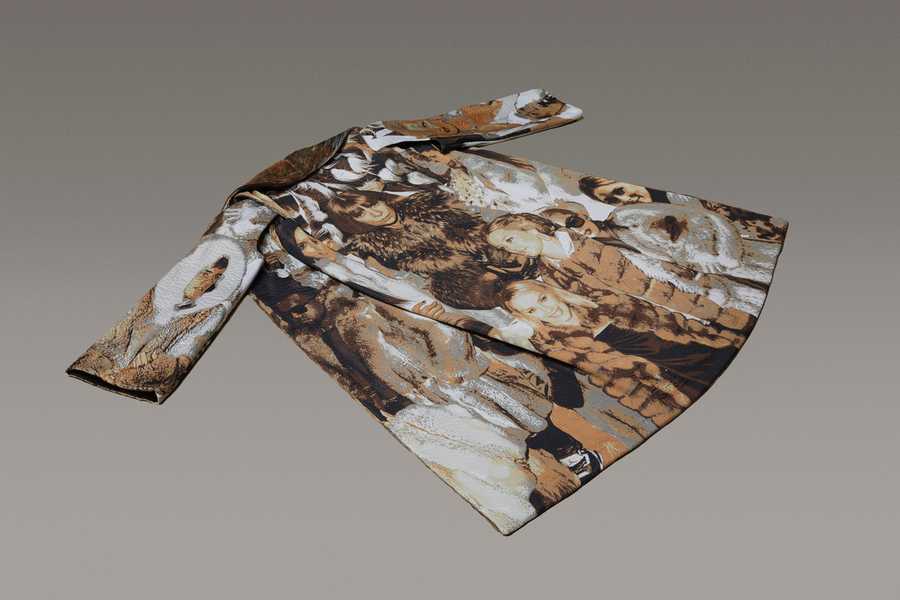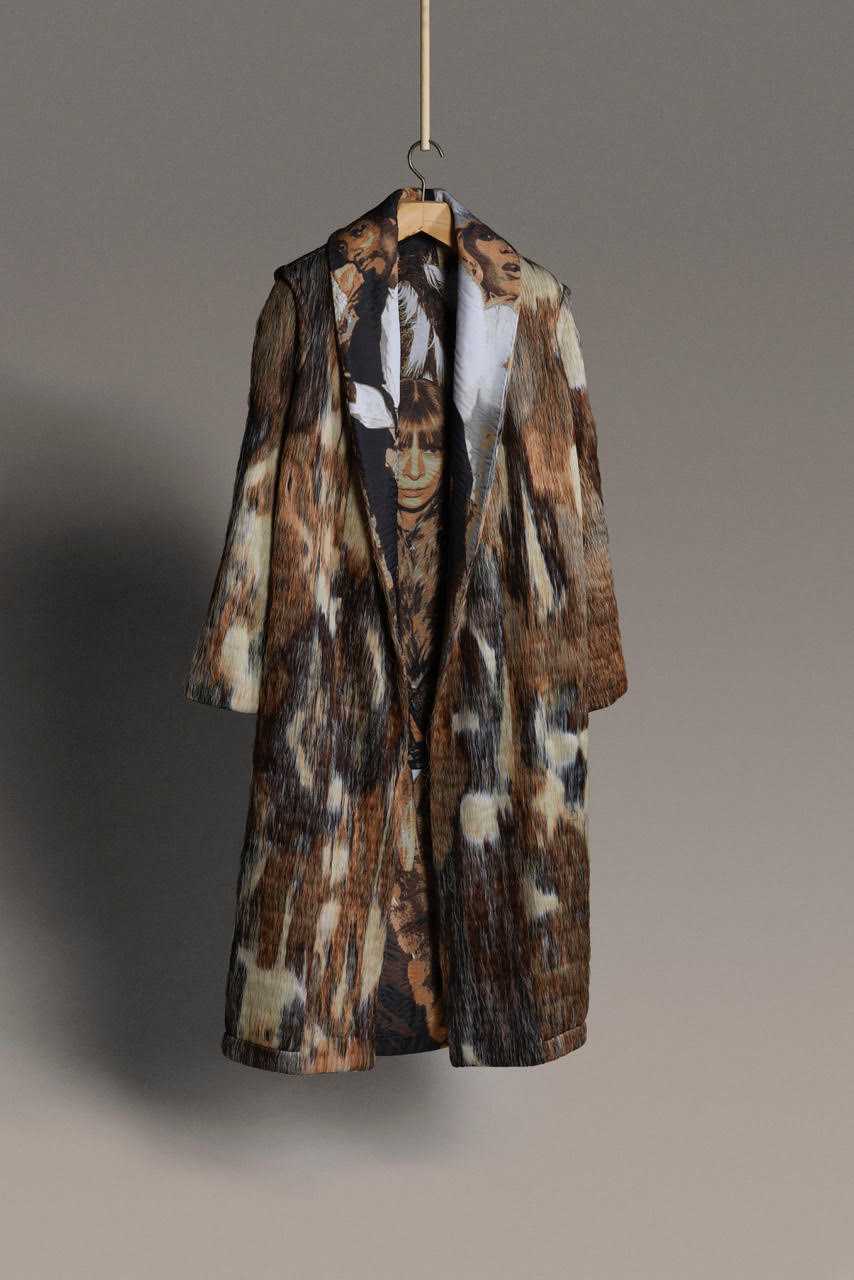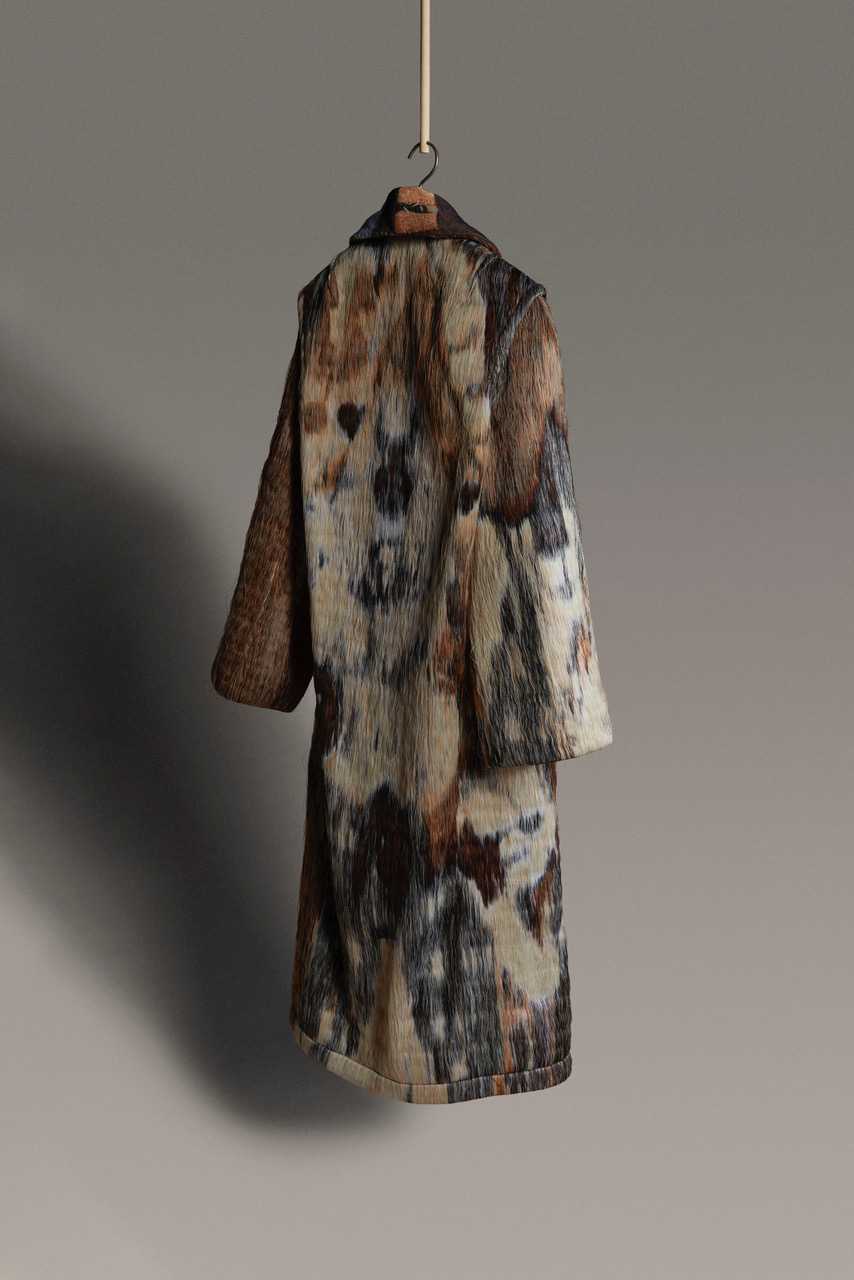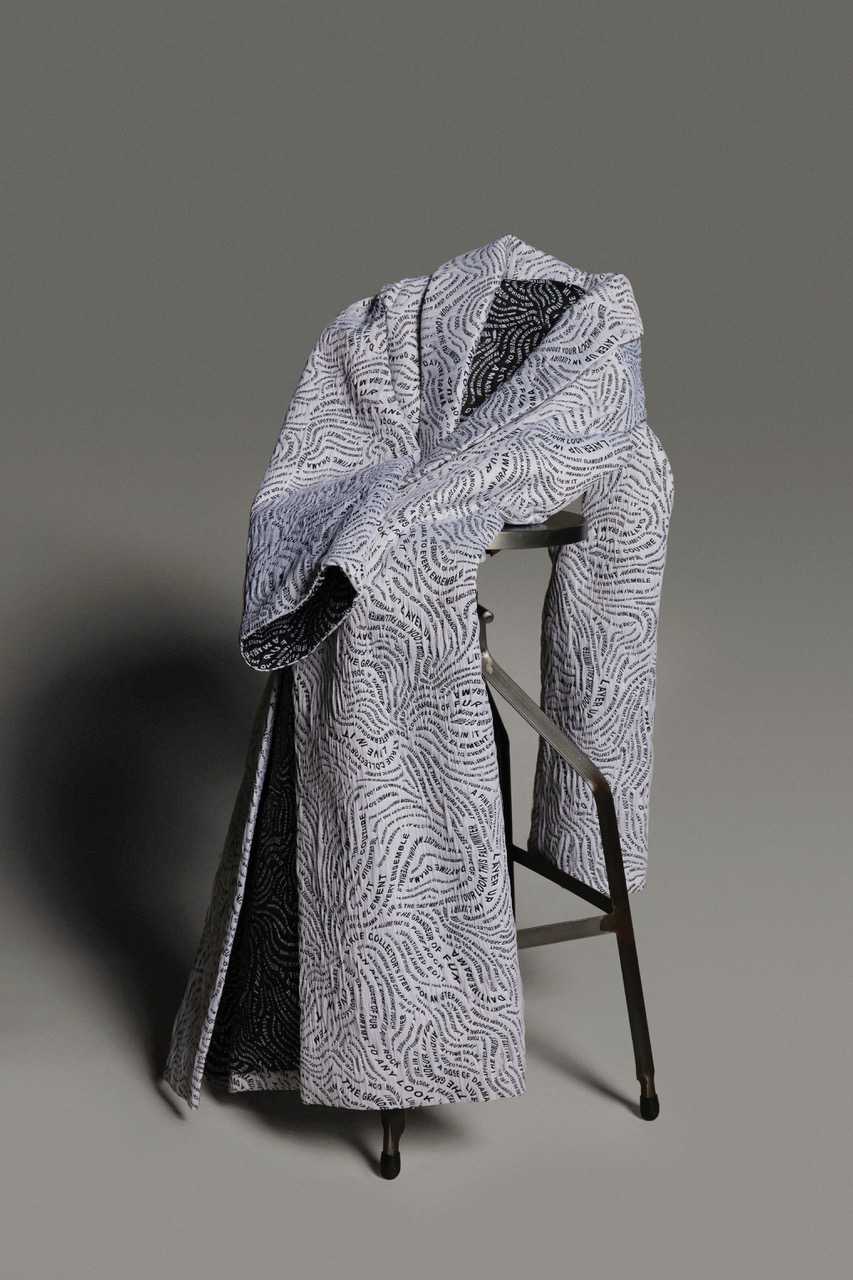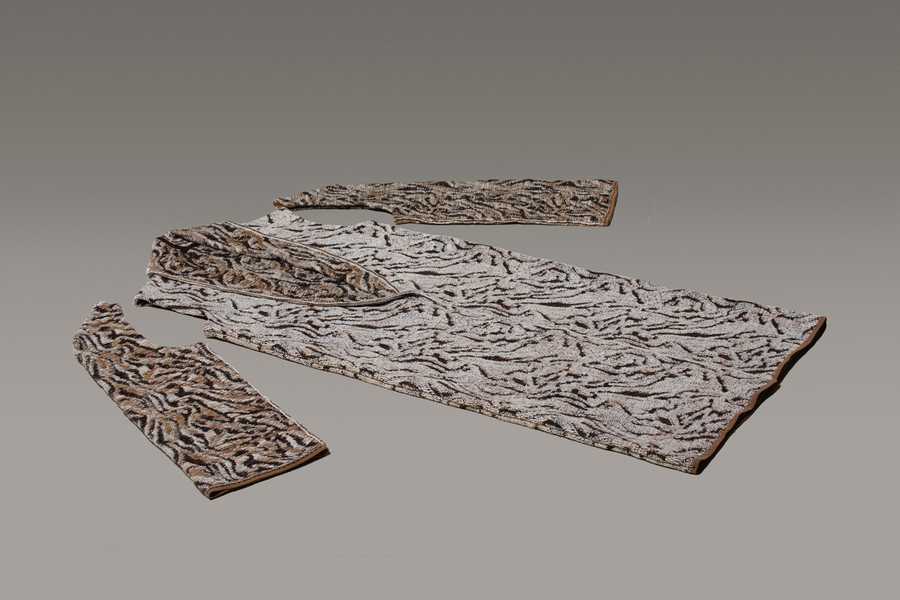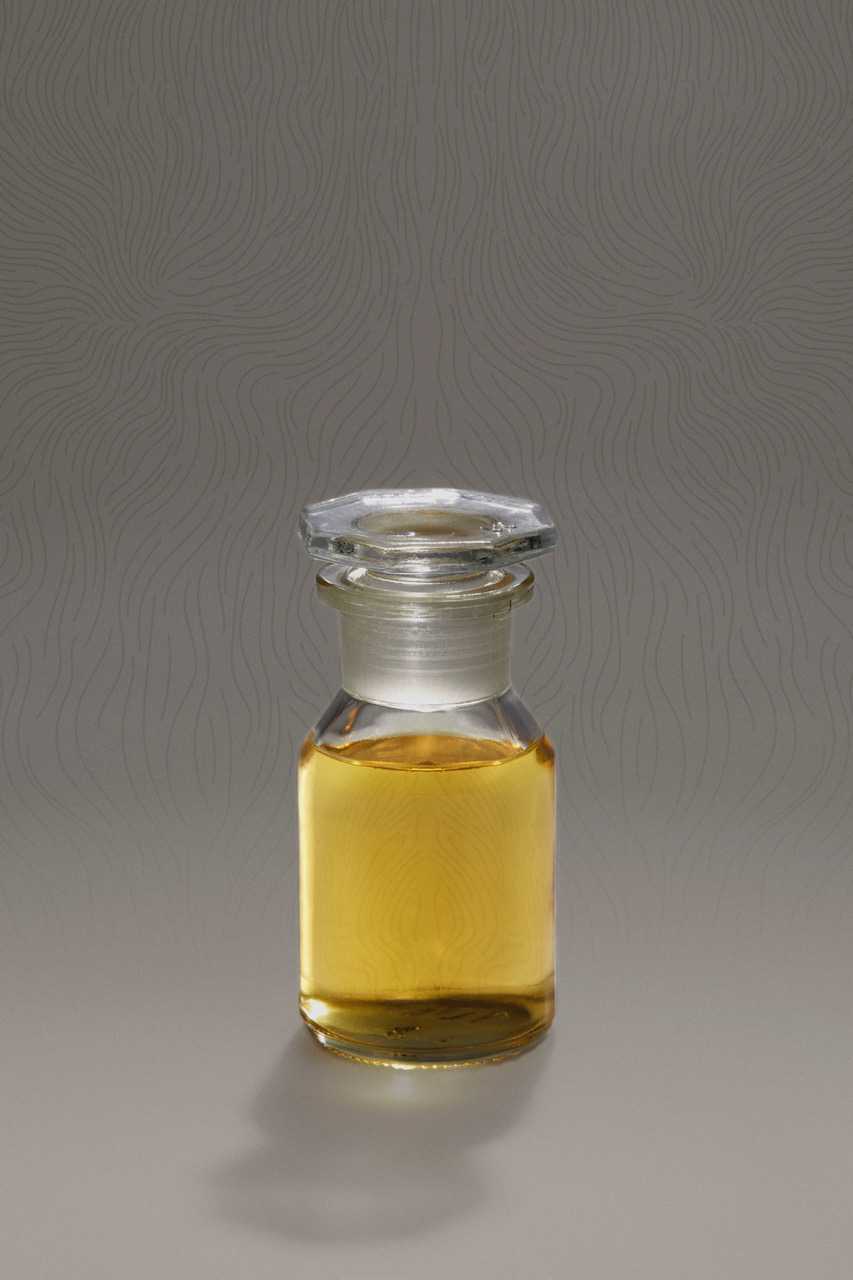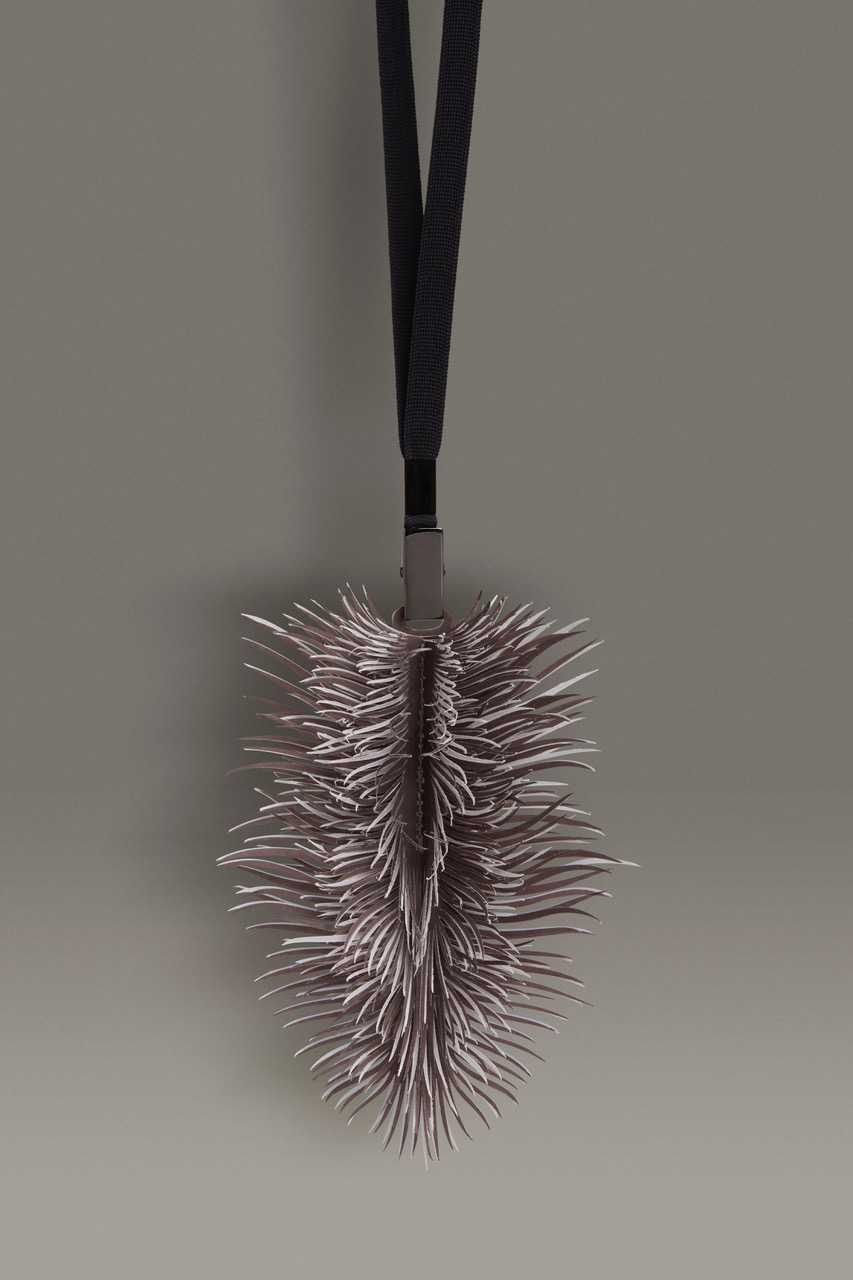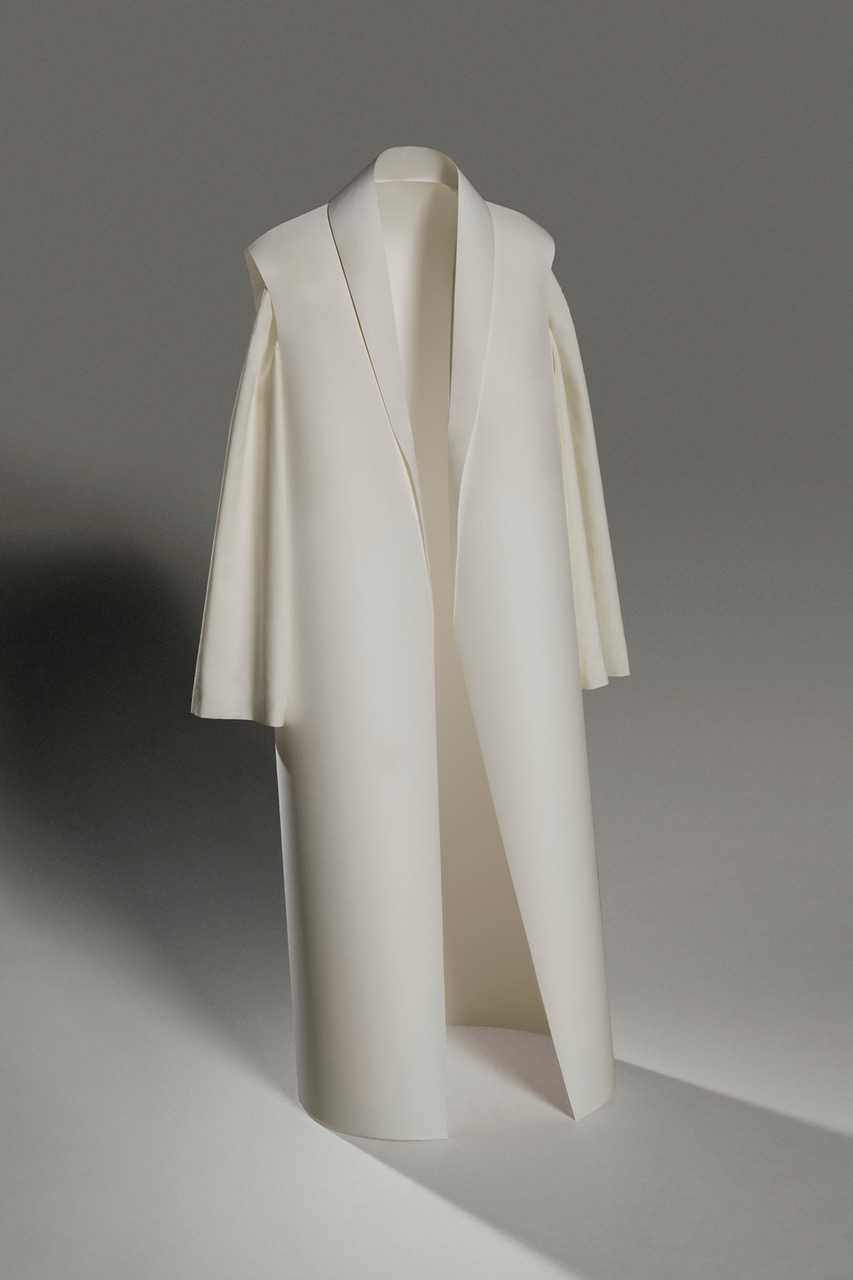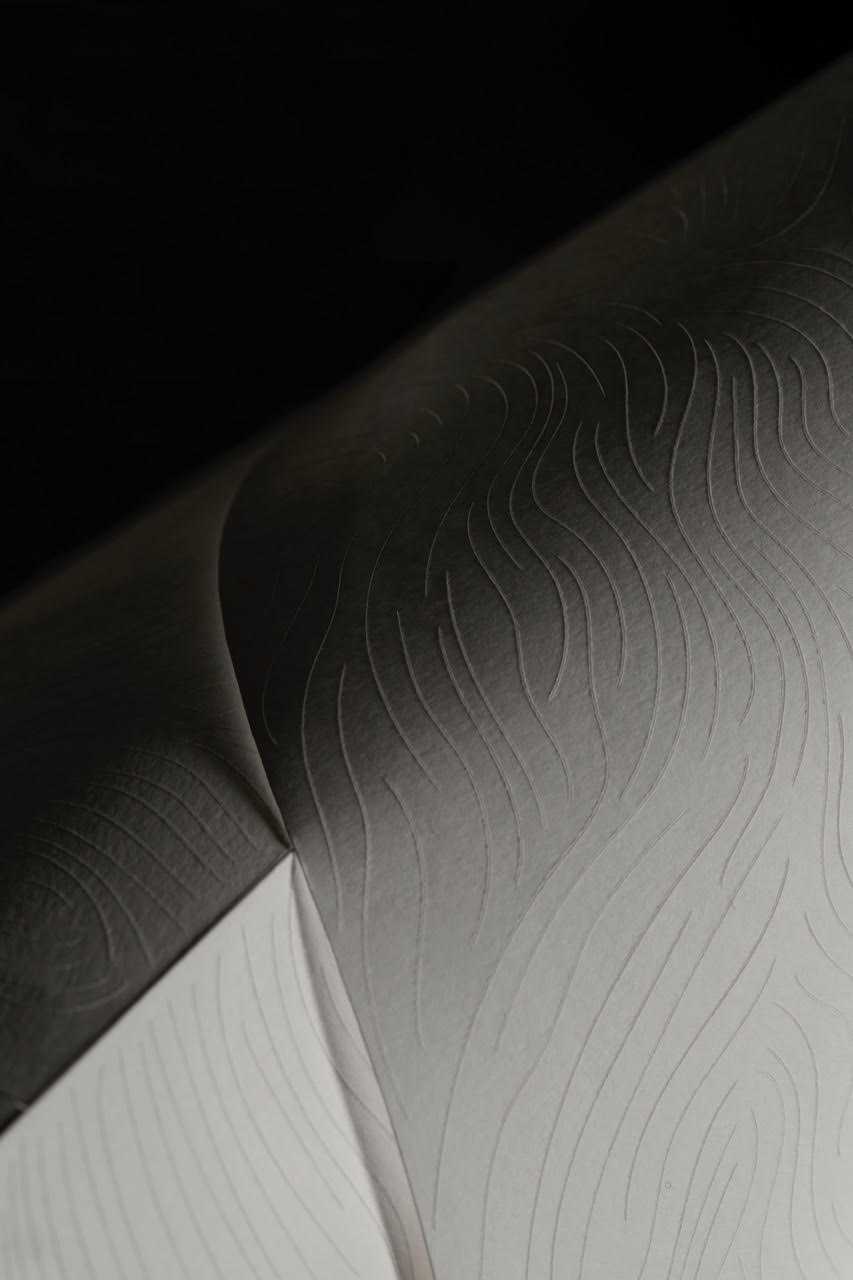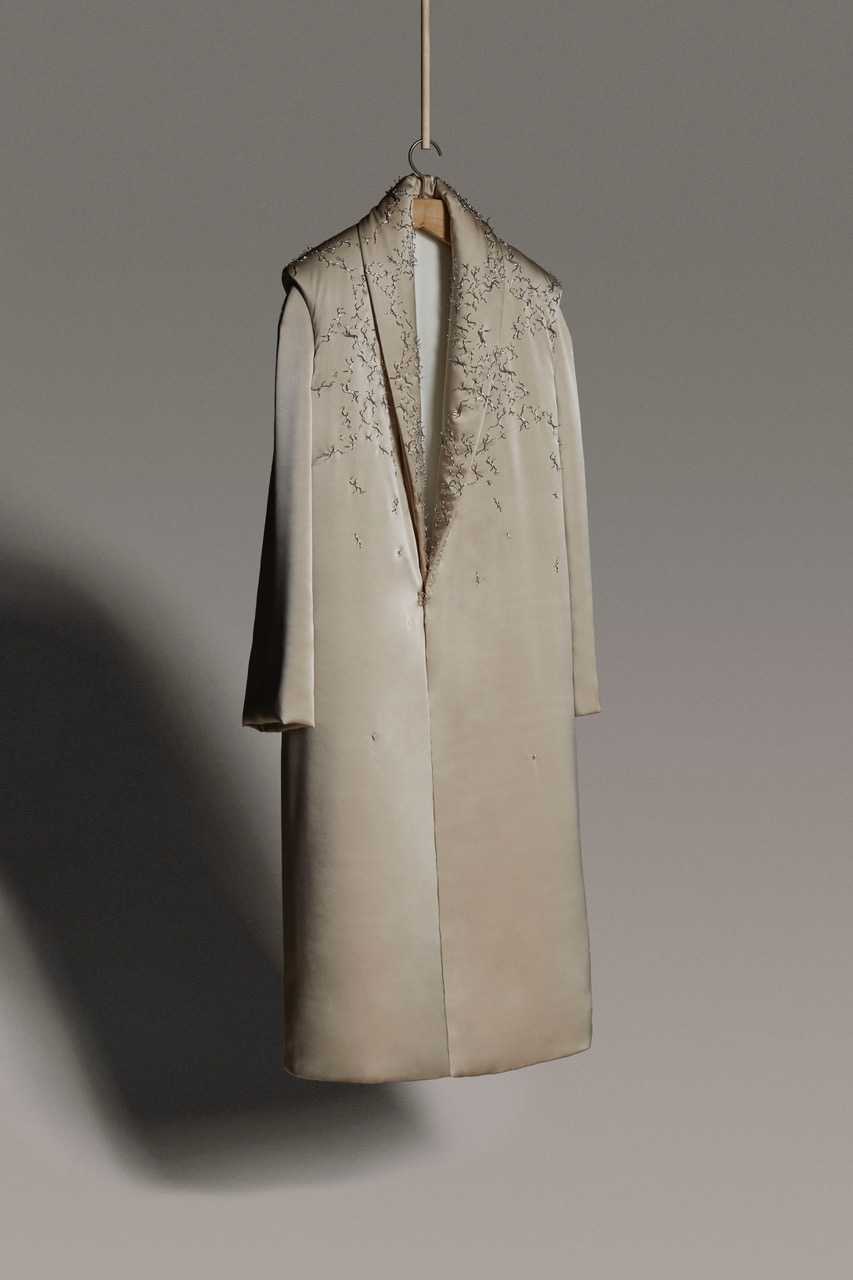After being in touch about their work some time ago, I received an email with the question to write about one of their projects, and thus about fur. I mean, I love fur, but only worn by the original owners, so I was quite hesitant and expressed this in my reply. After smartly persisting to meet, it made a lot of sense to talk in real life about how this work isn’t made with fur, but explores the many dimensions and meanings of it: fur as an heirloom, as a rich material but also a symbol of wealth, power, animal cruelty, glamour and heritage. Barbara, who brought a big bag with large swaths of material, photos and other snapshots from the process, explained how the pieces that were developed throughout the process are not structured like a traditional fashion collection but take the shape of a series of five coats, several jewelry pieces, a pomander and a scent. Each item explores certain values and ideas around fur. This is the second project that fashion designer Barbara Langendijk and jewelry designer Noon Passama work on together, and some items from their first project return in this one. In the first project, Noon made some cast metal elements and combined silver with technical textile. She described the result, that in a way resembled fur, as Silver Fur. These items and its title brought up an interesting dynamic between the general fastness of fashion and the durability of jewelry. So, with this expression, the second project began.
Right after our talk I went to the Apple store to have my laptop fixed. While I was walking up the spiral staircase, a woman wearing a fur coat was walking up the stairs right in front of me. It was an old fur coat. At the height of her bottom the hairs were worn off and the v-structure of the fur parts became visible, showing the intricate technique. The worn-out state of the coat was in great contrast with the shiny glass and marble interior of this store full of high-tech devices. I ended up sitting opposite of her at a table waiting for an employee to help me. She was, like so many fur-wearers today, not a bourgeois, glamorous rich lady but a young woman in her 20’s with a sporty cap on. I could picture her at a vintage store taking the coat from a rack full of old fur coats surrounded with T-shirts, sweats and jeans. Disconnected from its luxurious history. The girl, combining the sporty cap with the fur coat, made me think of Kim Kardashian, someone who combines sportswear and luxury items easily, and who Langendijk and Passama visualized in one of their coats. The next time we meet is online and I tell them about my encounter with this woman.
* Three bracelets made by plating silver directly on the 3D-spacer textile. The textile was cut in different lengths and assembled into the shapes before the silver-plating process.
‘ELITENESS’
F: I was wondering how you decided who to visualize in this particular coat. How did you choose?
P/L: We made a collection of images with celebrities who have contributed to today’s popularity of fur. They are all celebrities, but from different fields of work. But they do have the same way of wearing fur; big, glamourous and over the top. The selection of celebrities encompasses Melania Trump, Lady Gaga, Snoop Dogg, Kim Kardashian, Kendall Jenner, Justin Bieber and Rihanna, and we have more. All of them are sporting these over-the-top big fluffy fur coats worn with exaggeration. They represent glamour. These images were actually easy to find, the first ones that pop up in a Google search. In the pieces that we made we didn’t want to exaggerate but these people definitely do. By putting them together it shows the extravagance of these big personalities with impressive coats in a bit of an ironic way.
* The ‘inside’ of the celebrity coat.
F: This idea of celebrities wearing fur coats shows the connection between the elite and fur. As we discussed earlier, I’m not an expert in fur, but am interested in it as a cultural symbol. And one of the things fur clearly states is wealth. It was interesting to read in The Berg Companion to Fashion1 that from the fourteenth to the seventeenth century, the kings and queens of England issued royal proclamations in order to regulate fur. These royal proclamations became part of what is known as “sumptuary legislation” in which everyday practices involving clothing, drinking and eating were subject to public governance. “Thus, from very early on furs and fur garments were regulated, not only in order to establish a hierarchy in desirable fur, but also to create recognizable codes of social status in the wearer of fur2.
So, fur is not just for the elite because it was unaffordable for the ‘common people’, it was also decided upon by royal rules. Another important circumstance that contributed to fur being a symbol of wealth, is when fur entered the world-wide trade. In 1670 Hudson’s Bay Company3 was granted the Royal Charter from king Charles II, meaning that they gained the right and power to trade fur. “Hudson’s Bay has played an essential role in the fur trade which was established in the sixteenth century between France, and then England, and the New World (what is now Canada). It led to fur circulating abundantly among nobility as well as among a rising mercantile class of consumers as distinctive sign of class and imperial wealth”4.
Of course, fur has a rich history existing long before (and also alongside) Western royalty and Western trade systems came into being, but when it’s wearing became determined by royal rules and fur became a world-wide commodity, it started functioning in a system beyond local indigenous tribes and with that also started reaching more people and various layers of society. Whereas today more people might be able to afford a coat with a fur trimming, the idea of fur as an elitist garment still strongly exists. Now not because of sumptuary laws but because its expensive5 and because it has always been, and still is, a symbol of wealth and glamour.
The idea of wearing a fur coat on track pants or with a sporty cap, like the woman in the Apple store, is something that strongly represents our time, in which we mix street- and sportswear with high-end luxury fashion items. It is a game between ‘high’ and ‘low’ culture, between being elite and hinting or challenging ideas around ‘eliteness’, high fashion and wealth. Again, an interesting quote from the Berg Company Of Fashion mentioning that in 1926 there were debates in the British House of Commons over the benefits of socialism in providing women with practical and affordable cloth coats against the excesses of capitalism represented by a luxury fur coat, (…). This in response to a time (1920s) that “saw the image of the fur-clad woman emerge as a sign of unevenly distributed economic wealth”6.
INSIDE - OUTSIDE
P/L: Deciding which images of fur-wearing celebrities to use wasn’t easy because on a photo its often hard to see if it’s real fur or not. Which makes you realize that, in order to know if it’s real, you actually really have to touch it, open up the hairs or burn and smell some hairs. It’s similar with this coat that we made with the celebrities on/in it. It looks like hair but the hairy structure actually exists of yarns, long floats. We first learned about this jacquard weave, from an interest in the technique. But then we noticed that the long floats from the weave looked like hair. Jacquard is a technique that is used to weave dessins. It is easy to recognize because of the big difference between the two sides of the fabric. One side has a clear dessin, the other side shows the floats that jump to new spots in the weave leaving a messy look. These long floats resembling hair on the ‘inside’ of the fabric and the clear depiction of the celebrities on the ‘outside’, invited us to use both sides of the fabric. A reversible coat.
F: This reversibility is very interesting as it relates to early habits in the wearing of fur and how fur relates to social status. In the early period of fur trade in England the “fur was mostly worn on the inside, visible as a trim on the collar and cuffs. But during the late nineteenth century and throughout the twentieth century, fur became increasingly identified with elite women’s fashion and the fur coat was now “reversed” in the sense that fur was now worn almost exclusively on the outside.”7
P/L: With jacquard, the floats are supposed to be on the inside and these celebrities that are woven into it are people who are normally clearly out there, visible. So, it was interesting to create this dynamic between inside and outside, visible and invisible.
* The ‘outside’ of the celebrity coat. The images show the front and back view.
F: Fur is something we flaunt, it is something that’s clearly shown. And it is interesting to see how celebrities, as the new elite, are very visible in the media and with that create a certain meaning for the fur coat.
P/L: Yes, the representation of fur in the media is very interesting, it led to this coat we made with words on it. We collected texts that describe fur coats on sites like Matchesfashion.com, Mytheresa.- com and 24s.com. Like the celebrities, the type of text that is used to describe fur contextualizes it. As you also mention text and how it’s a material to work with.
F: Yes, the words you use to describe something also creates value. Words are in that sense a material to create meaning with. The words connect the fur to a broader societal and cultural context. What kind of texts did you use?
P: I just now sent you the list of the selected sentences that we’ve put on this coat. It includes sentences like:
F: Wow, this is so interesting. The words “sophisticated”, “grandeur”, “fantasy”, “glamour”, “couture” and “drama” clearly link to the idea of this elitist woman and the excessiveness of her lifestyle and the coat itself.
* The fur-text coat.
THE HUNT
F: What is interesting is that there are also sentences connected to hunting in there. I noticed the following ones:
And when researching celebrities and fur I found the following header for an article on a website of a fur company: “Kim Kardashian loves fur. She is a fashion assassin; she kills in anything she wears. Kim is the focal point of millions of would be fashionistas worldwide” .8 So, besides fur being linked to elite it is also connected to the hunter, the hunt. The hunting of the rare, the exclusive. These texts clearly show how various forms of power come together in fur. Besides that, these texts both apply to a garment and an animal at the same time; the rare animal, which is being hunted, is seen as prey and as a trophy piece. The fur coat as fashion item can also be seen as a trophy piece, that someone has hunted for and now wears. It is interesting and painful to see how the hunt and killing of animals is objectified and connected to glamour and power.
F: This one I believe is also specifically interesting:
We could interpret this as in ‘the coat being so nice and durable that we not just wear it, but we live in it’. But for me it is also about the idea of living in someone else’s coat. It reminds me of sleeping in an animal’s carcass like Leonardo di Caprio does in The Revenant when he crawls into a dead horse, and Luke Skywalker in Star Wars sleeping in the belly of his dead Tautan, and of course of Hannibal Lector wearing someone else’s skin in The Silence Of The Lambs. An animal’s coat, or let’s say, a coat of another being, literally changes into a human’s coat. To stay in the language area: when you wear a coat made of fox or mink hide you would say ‘I’m wearing fox’, or ‘I’m wearing mink’. The garment is literally named after the animal. It changes the concept of this well-known question; ‘who are you wearing?’9
This dynamic of the coat, moving between various beings, also brings up the thought of women wearing fur coats and holding their small dogs. The coat of the dog will gradually continue into the coat that the woman is wearing, made from mink, or maybe even dog, as that is a commonly used animal in some Eastern fur industries. The woman and the dog have a loving relation, but there’s a weird and dark dynamic between the three of them. Dog-women-dog.
CULTURED
F: Next to the hunter who hunts animals, another layer of power is added when you think of how the fur trade went hand in hand with colonial powers. As mentioned before, fur trade became an important economic unit for the mid-sixteenth century to the 1870’s. By granting the Royal Charter to Hudson’s Bay Company (HBC), HBC not only got this position in the fur trade but also gained ownership of all the land drained by the rivers flowing into Hudson’s Bay (…) this area covered approximately 40% of modern Canada.10 “The Hudson’s Bay, a company that is known for its colonial power, deliberately pushed away first nations communities, taking over their natural trade. The history of the fur trade and fur garments is in many was a history of imperial class distinctions but one that is also marked by gender and cultural differences”11.
P/L: And this sentence is also interesting: “For an afternoon at a modern art gallery” You have to be rich and to appreciate art to wear fur. This creates so much context. Fur is thus connected to being artistic and cultured.
F: Which is quite crude when we think of colonial powers and how they effected the ideas around ‘being cultured’.
TEXTURE AND TACTILITY
F: Throughout the process you have explored various values connected to the fur coat but besides that you also clearly explored tactility and texture using various techniques.
P/L: Yes, the coat with text on it for example doesn’t have text on it just to read it, the text also creates texture. Using the same jacquard technique as the coat with the celebrities on it, the woven texts are not just 2d and readable on one side, but they also create a hairy structure, due to the long floats, on the other side.
Another technique that we are exploring is knitted fur! I will show you a fabric swatch. It is an intricate knit that is based upon scans of real fur. It is a transformation from a dense 3d tactile material to a flat technical material. Again, a translation that challenges one of the main traits of fur, in this case its thick, fluffy character.
* The knitted coat with a pattern derived from a scanned image of fur.
F: Besides exploring the texture and tactility of fur, you have also explored other forms.
P/L: Yes, to explore fur from another dimension and the many ways in which it can be experienced, we made a scent which goes together with a paper coat and a paper pomander.12
F: How did you decide what the scent should be like?
P/L: It was quite a long process to find the right scent, because: what is the smell of fur? For us it started with the idea of the heirloom, an older fur coat which is worn by your grandmother or your mother for example. ‘The granny fur coat’ we called it. So, it’s like an old vintage perfume. And the scent is more like an impression of fur than to imitate the smell of the animal itself.
* The final fur perfume.
F: What kind of brief did you sent the perfumer, how did you specifically describe what the scent of fur is to you?
P/L: He asked us: what kind of impression do you get when you smell fur? We described it like a soft smell and something animal-like with something glamourous. When you make a perfume, you work with various so-called layers and notes. We wanted the base layer to be from an animal, or an animal-like smell. Then we wanted the top notes to be sweet and glamourous. But we didn’t want it to be too animalistic either. Sometimes it got a bit too animally, like a Civet cat. Yes, there’s one ingredient which is called Civet cat and it has this really penetrating smell. We thought it was super interesting because it was so very present and could represent the concept of maybe being overwhelmed by this whole idea of big fur coats. We also thought about incorporating that element, of being overwhelmed, but eventually we toned it down a bit.
F: Interesting, this idea of layers in a scent. It’s like literally begin dressed in layers: A woman wearing a fur coat, let’s just say an animal, and then she sprays her sweet perfume as notes over it.
P/L: Yes, it is. And when you think of it, a fur coat is something you wear and a perfume is also something you wear. We use the same term for a garment as we do for a scent. And thus, by wearing this perfume you can wear fur. They are both worn like a luxurious item. With the scent we also made a paper pomander and a paper coat. Both are items that can carry the smell. We chose paper because when you test perfume in a store, you get a small paper strip on which the perfume is sprayed. The look of the paper coat and the paper pomander both hints towards the texture of fur.
* The pomander made of layers of paper. It can carry the fur scent by applying the perfume onto the paper surface. Once the scent fades away, it can be re-applied.
F: The paper pomander actually also looks like an animal’s tail, as it is a long cord with a dot of ‘hair’ at the end.
P: The look of the pomander, made from hair like cut-outs from paper, refers to the look of fur and therefore gives a hint of what to be expected when you smell it. Pomanders were originally also often richly decorated and made from expensive materials, therefore it also became a status symbol of the elite. The idea to make a pomander from paper, a ‘worthless’ material also questions this.
P/L: Together the pomander, paper coat and scent make it possible to wear fur without really wearing it.
* The paper coat made of paper and washi textile. The paper is engraved with a hair pattern. The coat can carry the fur scent by applying the perfume onto the paper surface. Once the scent fades away, it can be re-applied.
* The engraved detail on the paper coat made by the cutting machine.
DURABILITY
F: This idea of the scent of a ‘granny fur coat’ hints to the concept of the heirloom, and as you mentioned before, vintage. An heirloom is something we value highly as it carries stories of previous lives, it can be a symbol of connection between generations, families and loved-ones. The heirloom is an object that is granted a longer life than most objects.
P/L: When we started the project, we described it as a research into sustainability and durability. Durability is a better word for it than sustainability. The fur coat lasts long and has great monetary value, therefore it is a garment that can easily function as an heirloom. The same goes for jewelry. As mentioned before, the project started from this connection that we saw between fur and jewelry. So, the first item that we made in this project is this coat with silver elements, a ‘silver – fur’ coat. The silver jewelry elements that resemble hair, create the look of a furry texture, and are placed on a padded material that hints to the fluffiness and density of a fur coat. So, this coat connects the fur coat as heirloom and jewelry as heirloom.
F: As you mention, considering a garment as an heirloom questions our fast-fashion industry of quickly discarding garments due to a lack in material quality and constant changing styles. On a personal note I do think it is important to know that durability is also something the fur lobby today is using to promote fur. Saying that it’s biodegradable and ecological. Opposite messages point out the many chemical processes are involved to preserve the skin from falling apart. In general, we have to take into consideration animal rights within our ideas around sustainability and durability. Do we really believe cruelty against other living beings is durable? I do believe, as you explore in your research, that approaching a garment as an heirloom would surely change our perception of garments and could change the fashion industry. There is some movement in Noon’s screen and she introduces her dog to us: Moon. Moon has short flat hair. She settles down next to Noon. We continue our conversation while Noon pets Moon.
DRESSING UP
F: When you asked me to write a text about this project I also had to think about my childhood. We used to have a big box full of garments to dress up in. In it there was this kind of shawl made from three matters attached to each other. The claws were still on there and their eyes were replaced by wickedly placed small dark beats. I was intrigued by it, repulsed and curious at the same time. This idea of dressing up also made me think of dressing up into an animal or turning into an animal. I referred to crawling into carcasses and wearing skin earlier in the text, but this summer I read this book Putting On The Dog, about the animal origins of what we wear and it explains how various indigenous and native peoples have a strong history in wearing animals hides during the hunt. “Dressed up as animals (FdV: in animals) whether feathers, leather or skins they must have seemed incomprehensible to other animals, so they had no choice but to accept them (…). As a disguise these garments did not call attention but deflected it. The hunters were invisible”13. Today people wear fur, they wear animals in the city, a place where there are no other animals, only humans. In this environment fur-wearers don’t deflect but become very visible. Today we dress up like an animal to grab attention and look elitist.
ALTERNATIVES FOR CRUELTY
F: Today fur is a strong symbol for animal cruelty14 “By the 1970s the fur coat was transformed from a desirable female commodity to a symbol for animal right’s activism”15 It is undeniable that the fur industry is one of animal cruelty. The many ways in which these animals are hunted, bred, kept and skinned is something that should’ve been in the past since long. For many, fur might resemble glamour and richness, to me fur is a symbol of coloniality, capitalism, the elite and animal cruelty.
L: I think the awareness is growing in general. I had an intern who explicitly said she would only come to intern with me if we wouldn’t use real fur. So, the awareness is growing.
F: Really great to hear about such determination coming from a student applying for an internship. As you know, due to this focus on fur, I was also doubting to work on this text, but as soon as it became clear that you use the values of fur as a starting point, and are not promoting fur or collaborating with fur producers, I saw the value of this research. What I appreciate about this research is that even though it wasn’t the goal of the project, the work doesn’t only open up a conversation around fur but you also come up with alternatives. The work shows that the values of fur (whether ‘good’ or ‘bad’) can be incorporated in garments or objects in different ways, showing that the use of real fur is superfluous. I hope our conversation, transcribed here as complete as possible, therefore creates awareness about the history and contemporary implications of fur, and besides that shows the explorative and layered nature of your work. Creating awareness about fur and the dense and layered history of fur is essential in reconsidering our habits in relation to fashion and how we connect to other living beings, and I believe your work does that. As I believe the fur coat is a garment not to wear, buy or promote at all I would surely say to wear or look at the work of Langendijk and Passama, instead.
Words by Femke de Vries
Footnotes
